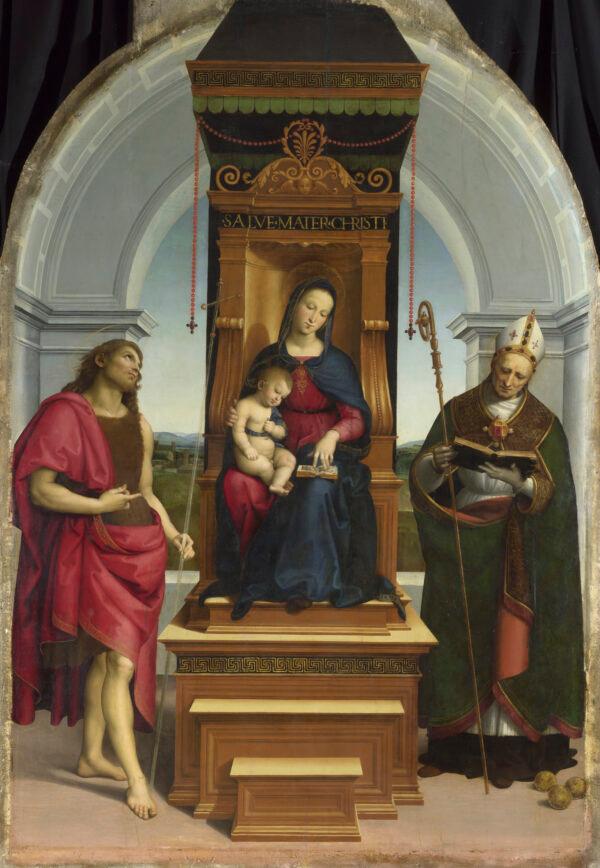When darkness seems to shroud the world, traditional art can help. Art’s ultimate role is to uplift us by reminding us of how to be good, true, and the best we can be. When traditional artists create such enduring art, it can awaken our innate goodness. The works of Italian Renaissance master Raffaello Sanzio (better known as Raphael) reach the epitome of such art. And more than five centuries after his death, Raphael’s art is relevant now more than ever.

"The Madonna and Child With Saint John the Baptist and Saint Nicholas of Bari ('The Ansidei Madonna')," 1505, by Raphael. Oil on poplar; 85 3/8 inches by 58 1/8 inches. The National Gallery, London. The National Gallery, London






